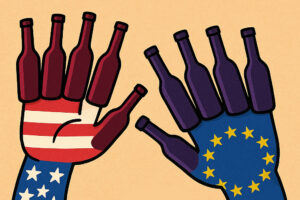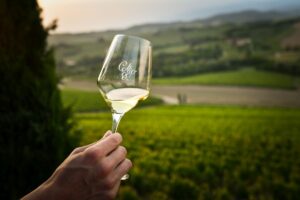The profile outlined in the study by Nomisma Wine Monitor for Grandi Marchi (members include 18 leading Italian wineries: Alois Lageder, Ambrogio and Giovanni Folonari Tenute, Argiolas, Ca’ del Bosco, Carpenè Malvolti, Col d’Orcia, Donnafugata, Jermann, Lungarotti, Marchesi Antinori, Masi, Michele Chiarlo, Mastroberardino, Pio Cesare, Rivera, Tasca d’Almerita, Tenuta San Guido and Umani Ronchi) showed that nearly 9 out of 10 Italians between the ages of 18 and 65 have drunk wine at least once in the last 9 months — precisely, 87%, compared to 84% in 2020. Sixty-nine percent love to drink wines from their territory, while 62% also like to try wines they don’t know, especially if they are produced in a sustainable vineyard (59%) and from small producers (57%). 40% say they prefer organic wines, 35% from well-known wineries and brands, and 26% like to drink expensive wines. Only 20%, instead, like foreign wines.
Obviously, price is one of the most important factors, since 69% pay close attention to value for money, when choosing what wine to buy. Further, 47% buy expensive wines only when they are on sale, while 26% say that wine on sale is a primary condition to purchase a bottle. A bottle of wine, however, is still one of the most popular gifts, since 64% of consumers like to give or bring wine as a gift when they go to friends’ and relatives’ for lunch or dinner.
Regarding the culture of wine, however, there is still a lot of work to do. While half of consumers like to hear stories related to the wine world, 40% have said that they have very little knowledge of wines and grape varieties. Wine is a social phenomenon, to the point that more than one Italian out of three has declared that they enjoy holidays and travels dedicated to wine tourism, have taken or would like to take courses on wine, and have attended fairs, festivals or events linked to the nectar of Bacchus.
Where do Italians consume wine? Above all, at home, 71%(64% at home, 7% primarily with friends and relatives). On the other hand, less than one in three Italians consume wine in restaurants and wine bars. The mass retail channel is the most popular place to purchase wines for 73% of consumers, while almost half buy in wine shops or directly from the producer. One out of 10 Italians instead, turns to apps, specialized sites and online, in general. At any rate, people who buy wine in hypermarkets and supermarkets (more men than women, and belonging to the “Baby Boomer” or “X Generation” classes, that is, the more mature segments of the population), buy a little of everything, considering that over the last 12 months, more than 85% have purchased sparkling, white and still red wines (the percentage rises to 90% for the latter), at least once, while only 65% have bought still rosé wines.
The most popular supermarkets for purchasing wine are Conad and Coop, more than 60%, ahead of Carrefour and Esselunga, where just over 40% of consumers buy wine. The classic 0.75 liter bottle is by far the most popular format (92% have bought it at least once over the last 12 months, the carton format is second, but at a distant 21%). The price range at the most popular mass retail channels is between 5 and 10 euros, where 49% of consumers choose wines, while 28% spend less than 5 euros, and 16% between 10 and 15 euros per bottle.
The most important characteristics in choosing a wine are PDO or PGI brands, sales, origin of territory, the brand and low prices. However, in view of the drop in sales in mass retail in 2022 compared to 2021, (which is actually just a return to 2019 levels, pre-pandemic), the positive news is coming from future purchase intentions, in the hypermarket and supermarket channel. Sixty-six percent think their purchases will remain unchanged, while the difference between people thinking of increasing and those instead of decreasing purchases, is +7% in favor of people thinking of buying a few more bottles. This is definitely a good omen for 2023, which is looking to be anything but simple.
Copyright © 2000/2025
Contatti: info@winenews.it
Seguici anche su Twitter: @WineNewsIt
Seguici anche su Facebook: @winenewsit
Questo articolo è tratto dall'archivio di WineNews - Tutti i diritti riservati - Copyright © 2000/2025








































































































































































































